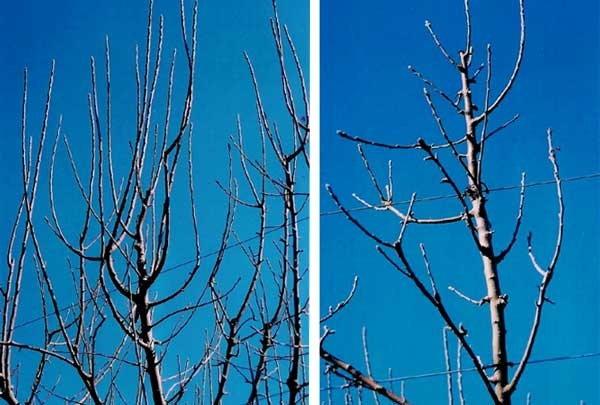Trees respond differently to heading cuts made in spring compared with those made in winter.
If you cut a shoot, branch, limb or leader in winter, only the buds directly under the cut will break and form strong new shoots with narrow angles.
But if you delay making this cut until spring (when the trees have leaved out and flowers have set fruit), more buds will break and form shoots with wide angles. This is called delay-heading.
It allows you to manage tree vigour without having to use a growth regulator.
When your trees have reached their maximum permissible height, you should never cut the trees back in winter, because heading cuts in winter will only stimulate more strong shoots in the tops of the trees. This is a never–ending and costly battle for you.
The strong new shoots in the heads of the trees will also cause excessive shading, followed by poor flower bud formation and loss of production.
Timing
The time to delay-head depends on the vigour of the trees.
Look at the shoots in the tops of your trees. If shoot growth is very strong, delay-head late (mid November to early December). If vigour is moderate, delay-head early (October).
Two-stage pruning
You will be rewarded with trees that remain calm and productive and cost less to prune in future years by pruning your trees in two stages.
Stage 1: Prune in winter as you normally do—but this time do not touch the strong shoots in the tops of your trees.
Stage 2: Deal with the strong shoots in spring or early summer.
For all the images, see the November 2012 Tree Fruit






















